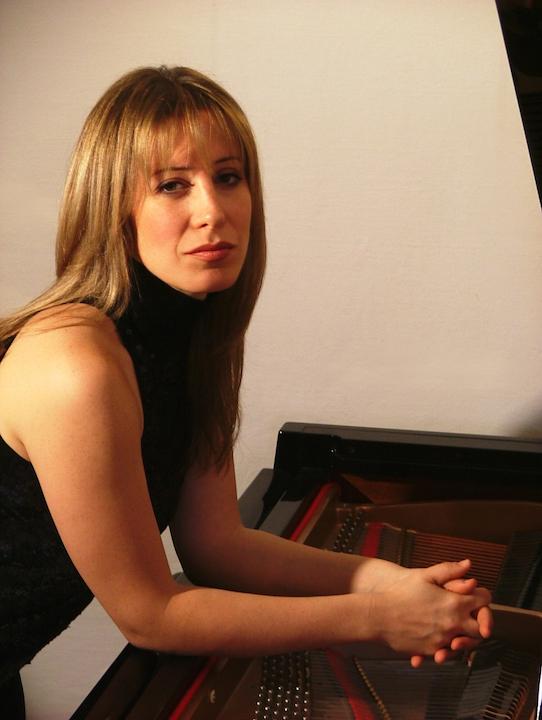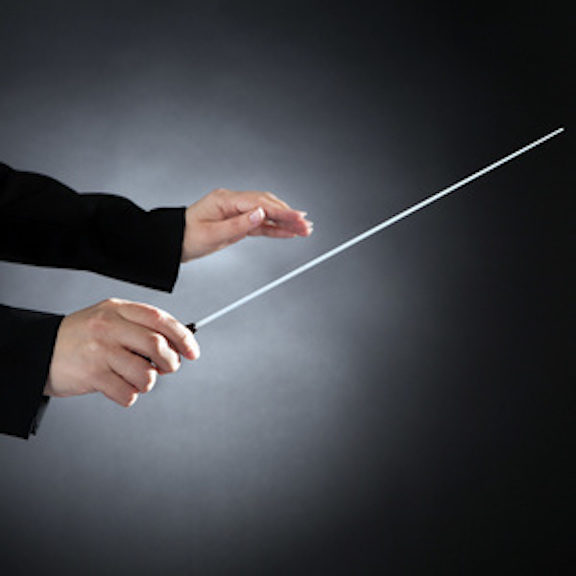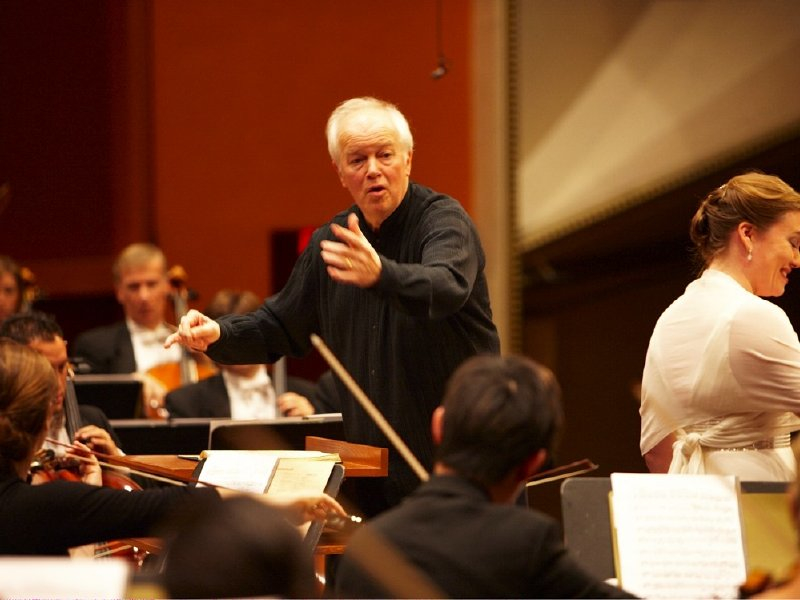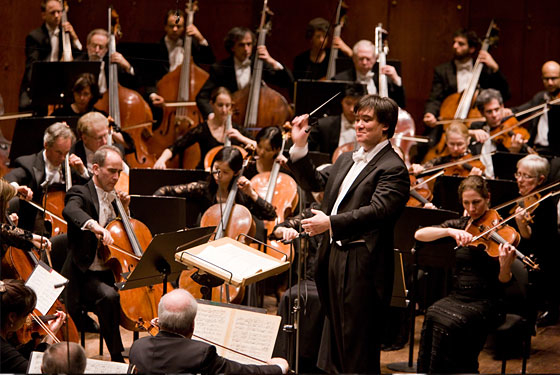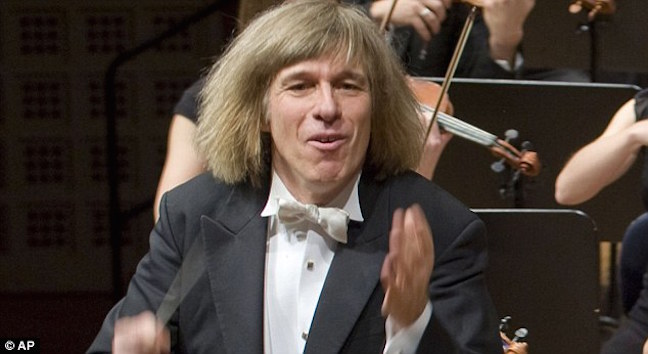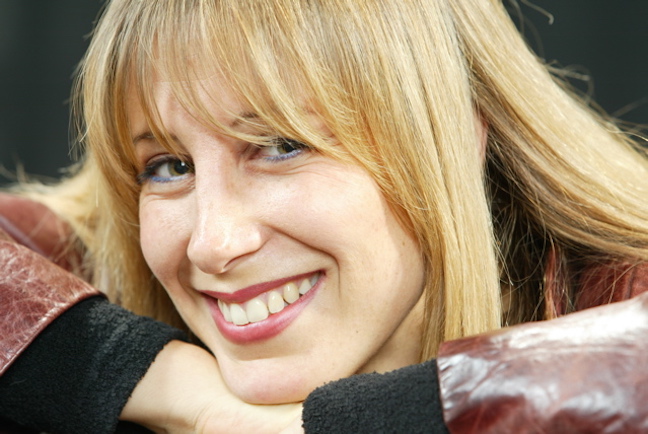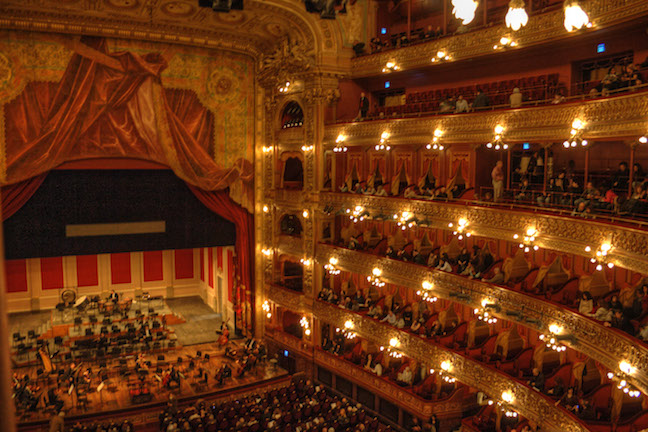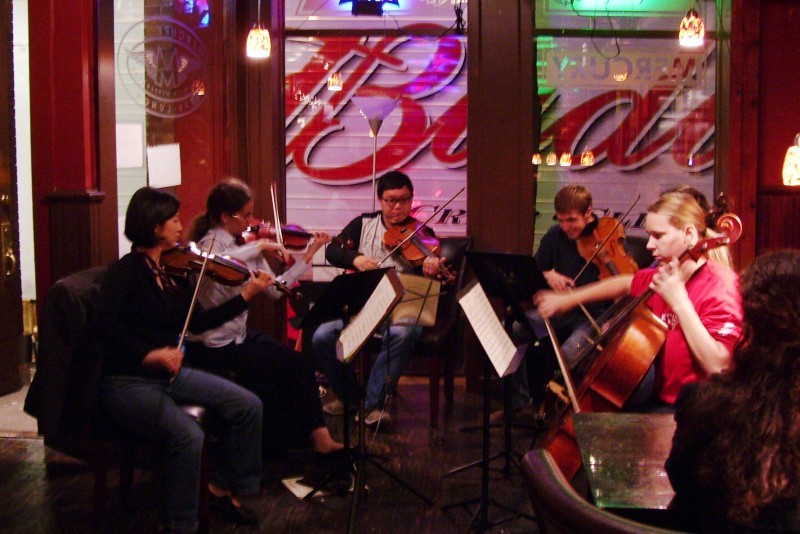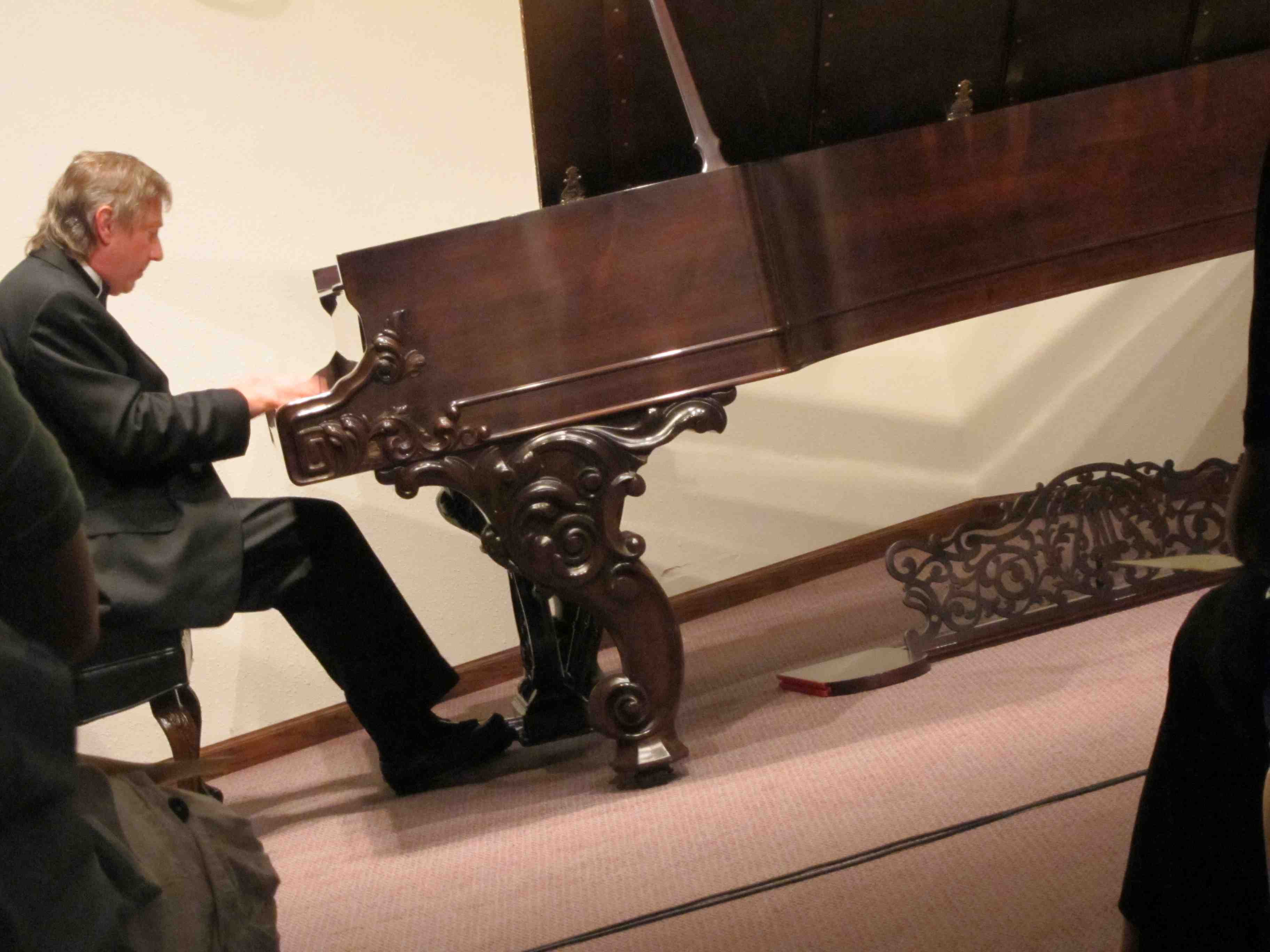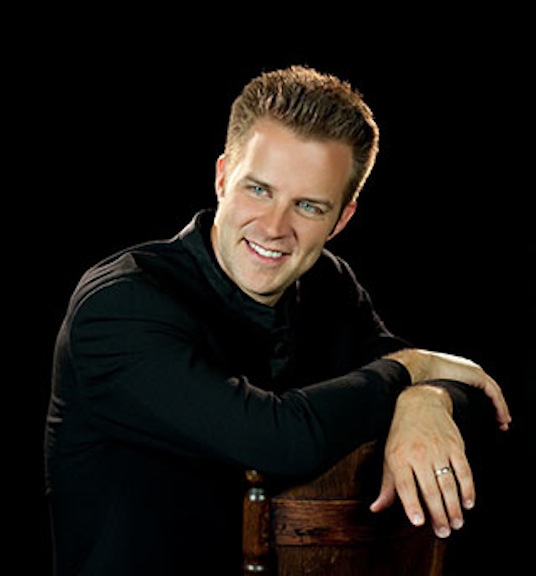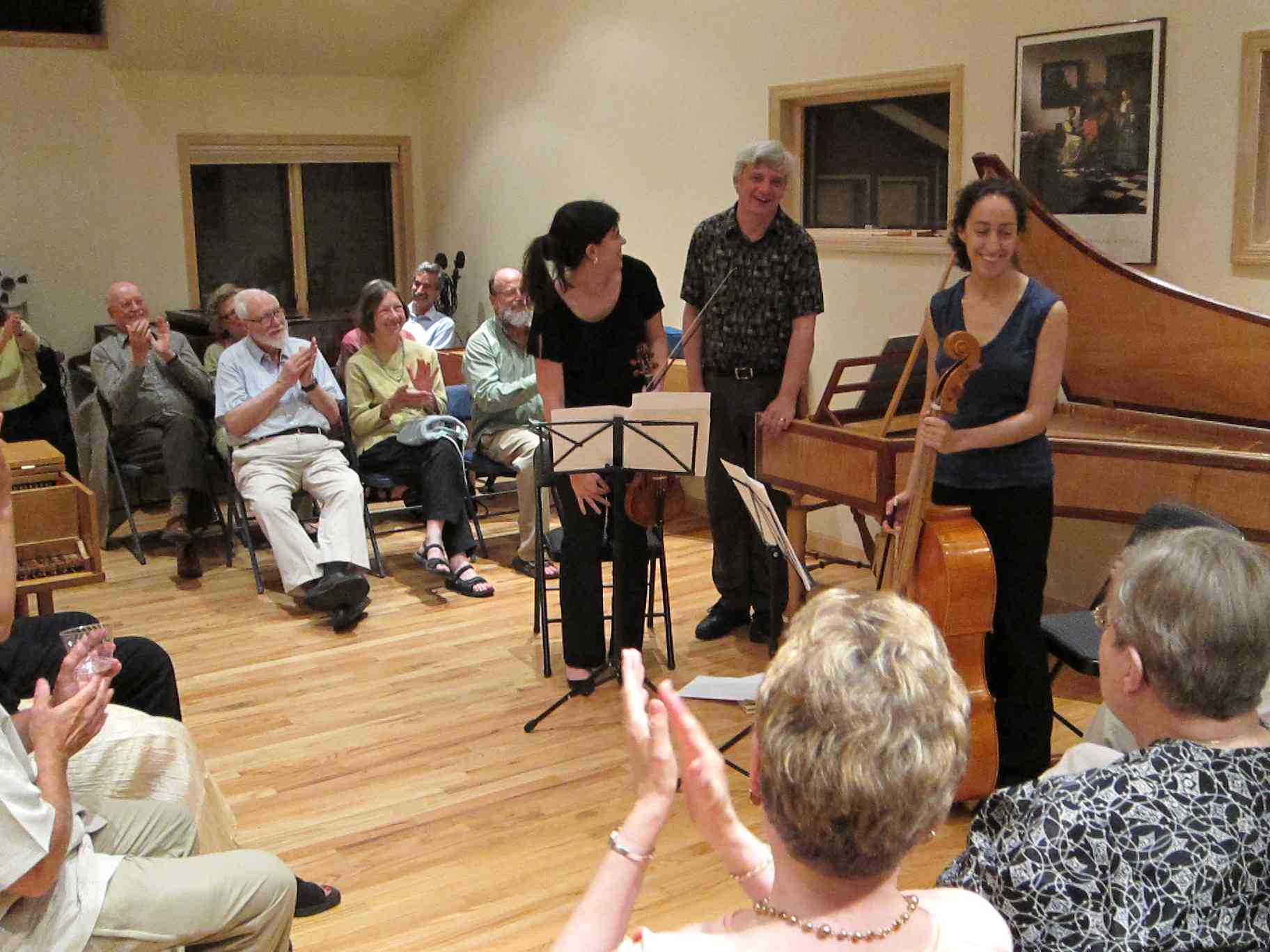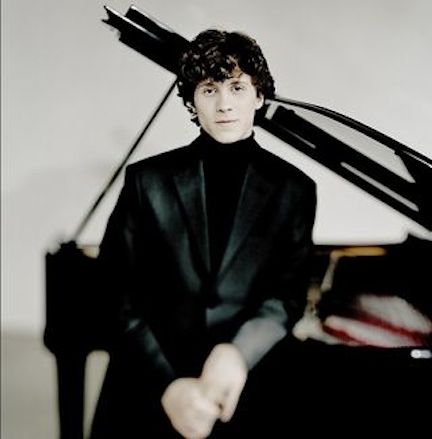The Well-Tempered Ear
Classical music: Pianist Ingrid Fliter talks about sexism in the concert world and discusses the difficulty of playing the music of Chopin, which she specializes in and will perform this coming weekend with the Madison Symphony Orchestra.
1 Comment
By Jacob Stockinger
It is hard to imagine a more fitting program for Valentine’s Day weekend than the one that the Madison Symphony Orchestra will perform.
The program, to be performed under the baton of MSO music director John DeMain, includes the Piano Concerto No. 2 by Frederic Chopin with the prestigious Gilmore Prize-winning pianist Ingrid Fliter (below); the Symphony No. 4 by Robert Schumann, an arch-Romantic; and the Variations on a Theme of Frank Bridge by British composer Benjamin Britten, who was a student of Bridge.
Performances are in Overture Hall in the Overture Center. Times are Friday at 7:30 p.m.; Saturday at 8 p.m.; and Sunday at 2:30 p.m.
Tickets are $12-$84.
But until midnight this Tuesday, there is a special Valentine’s Day deal of two tickets for the price of one going on. For details, got to http://www.overturecenter.org/events/fliter-plays-chopin or call the Overture Center Box Office at (608) 258-4141.
Fliter recently agreed to an email Q&A with The Ear:
Can you briefly introduce yourself to readers who may not know you? What are your current and future plans and projects?
I’m an Argentinian pianist. I live in Italy in Lake Como for many years now. I consider myself an art lover. I do believe art can be life-changing to people. And that’s what I concentrate on doing when I perform: To bring happiness and inspiration to audiences.
Do you think the professional concert world treats women differently? Or has the sexism of past eras improved in your experience?
I do believe sexism in art still exists among presenters, conductors, agents, people in general, etc. The phrase “She plays like a man!” is heard more often than wanted. And it is amazing to see that even women can be sexists towards other women as well by accepting certain prejudices imposed by obsolete cultural traditions.
However I do believe women have the power to keep changing that mentality by showing the world and, more importantly themselves that they can do as well (or better) as anyone else.
You known especially as a specialist in Chopin (below), whose music you will play here. What makes Chopin so unique and so popular?
Chopin is a composer who speaks directly to the heart of people. Like a dear friend who shares with us his deepest secrets of life, his music is intimate and personal. He doesn’t describe landscapes or tell stories. He speaks about human feelings and people feel represented and touched by the beauty he creates. He enhances harmony and enriches people’s life.
Recently, Norwegian pianist Leif Ove Andsnes said Chopin is more difficult to play successfully than Beethoven. What are the elements of great Chopin playing that make his music so challenging to the performer?
I can agree with this. Chopin is one of the most difficult composers to play. His Romanticism is not obvious and it is very important — and hard — to find a right balance between his Romantic soul and his Classical expression.
Also, the importance of making the piano sing as a singer would do is deeply challenging because it means fighting against the nature of the piano, which is a percussive instrument.
But more importantly, Chopin (below) requires from us all our senses completely in balance and in harmony with nature. We cannot allow our body to be tensed or our heart to be arid when we play Chopin. His music will always be a mirror of our soul and will reflect our inner world, totally naked.
You will perform Piano Concerto No. 2 over Valentine’s Day weekend. It seems a perfect choice for the occasion. What would you like the audience to know about the Piano Concerto No. 2, especially as compared to No. 1, which was composed later?
This concerto is one of the most beautiful pieces ever written. The poetry, the beauty, the perfection of form and level of maturity reached by this 18-year-old teenager are simply astonishing and revealing.
This music is irresistible and seductive. Let yourself be embraced by the perfumes and textures he creates and you’ll be taken into a wonderful world, a world you would never want to come back from. Special attention goes to the marvelous second movement with its beautiful melodic lines, which might bring a little tear to your eyes. (You can hear the second movement, performed by pianist Arthur Rubinstein with the London Philharmonic under conductor-composer Andre Previn in a YouTube video at the bottom.)
You have performed in Madison before in a recital at the Wisconsin Union Theater. Do you have an opinion about Madison and its audiences?
I have the best memories from Madison and its public, and I’m looking forward to our next encounter!
Was there an Aha Moment! – a piece or performance or performer – when you knew you wanted to be a professional concert pianist?
I was 16 years old and playing the Piano Concerto No. 3 by Ludwig van Beethoven for the first time with the orchestra at the Teatro Colon (below) in Buenos Aires. The hall was packed and the atmosphere was febrile. I remember my feeling of total joy knowing I was about to perform that concerto for all those people. I felt in the right moment in the right place.
How do you think can we get more young people interested in classical music?
Education, education, education. We must show young people classical music is theirs as well, not something old that belongs to museums.
Music is a vehicle of human expression and this is what we, as educators, parents, need to inculcate since the very beginning. So, parents have to be educated as well.
Music in school shouldn’t be the “free time” classroom, but should be taken as a moment of spiritual joy and recreation. Parents should listen to classical music at home, and share their feelings that music brings with their children.
Also, we should bring classical music into more deconstructed environments outside concert halls, in houses, bars, airports, parks. (Below is the Madison chapter of Classical Revolution performing chamber music in a bar.)
Tags: Andre Previn, Argentina, Arthur Rubinstein, Arts, Beethoven, Benjamin Britten, Classical music, Classical Revolution, Compact Disc, concerto, Frank Bridge, German Romanticism, Gilmore, Gina Bachauer, Ingrid Fliter, Irving S. Gilmore Foundation, Italy, Jacob Stockinger, John DeMain, Lake Como, Leif Ove Andsnes, London, London Symphony Orchestra, Ludwig van Beethoven, Madison, Madison Symphony Orchestra, Music, Norway, Orchestra, Overture Center, Piano, Piano concerto, Schumann, Sexism, Wisconsin Union Theater, YouTube
Classical music: This will be an outstanding semester for piano fans in the area. But it starts with a “train wreck” this Friday night with dueling piano concerts by Christopher Taylor and Ilya Yakushev.
1 Comment
By Jacob Stockinger
For piano fans, the first semester in Madison proved a bit underwhelming, even disappointing when compared to many past falls.
But that is about to change this semester, starting this weekend.
Of course this piano-rich week comes complete with the inevitable piano “train wreck,” as The Wise Critic terms such scheduling conflicts and competition.
CHRISTOPHER TAYLOR OR ILYA YAKUSHEV
For many area listeners, the big annual piano event is on this Friday night at 8 p.m. in Mills Hall. That is when the UW-Madison School of Music virtuoso Christopher Taylor (below) — whom The Ear hears other schools are trying to lure away from the UW — performs his annual solo faculty recital.
Taylor, famed for his prodigious technique and fantastic memory, has won praise nationwide and even internationally for his performances of all kinds of difficult music, from Johann Sebastian Bach and Ludwig van Beethoven to Olivier Messiaen and Gyorgi Ligeti as well as contemporary musicians like Derek Bermel.
Taylor’s program this time is an unusual one that mixes old and new.
It features another of the dazzling two-hand transcriptions by Franz Liszt of the symphonies by Ludwig van Beethoven, which Taylor has been performing elsewhere in a cycle. This time he will perform the famous Symphony No. 6 in F Major, “Pastoral.”
Also on the program are seven of the 12 etudes by the contemporary American composer William Bolcom, who taught at the University of Michigan-Ann Arbor, and the Sonata No. 3 in F minor, Op. 5, by Johannes Brahms — a wondrously dramatic and beautiful work that you can hear performed by Van Cliburn International Piano Competition winner Radu Lupu in a YouTube video at the bottom.
Tickets are $10 and benefit the UW-Madison School of Music Scholarship Fund.
For more information, including some national reviews of Taylor, here is a link to the UW website:
http://www.music.wisc.edu/events/christopher-taylor-piano-faculty-recital/
But, as I said, there is a problem.
At exactly the same time on Friday night, in the Capitol Theater of the Overture Center, is a terrific concert by the Wisconsin Chamber Orchestra with Russian pianist Ilya Yakushev (below), who last performed Prokofiev and Gershwin concertos with the WCO.
This Friday night’s program includes Yakushev in two well-known concertos: the keyboard concerto in D Minor by Johann Sebastian Bach and the Piano Concerto No. 1 in G minor by Felix Mendelssohn.
Also on the program – typically eclectic in the style that conductor Andrew Sewell (below) favors — is the English Suite for Strings by British composer Paul Lewis and the Chamber Symphony No. 2 by Arnold Schoenberg.
For information, go to: http://wcoconcerts.org/performances/masterworks/77/event-info/
But this piano weekend doesn’t stop there.
On Sunday afternoon at 4 p.m., Ilya Yakushev will open the new season of the Salon Piano Series when he plays a solo recital in the concert room (below) at Farley’s House of Pianos, on Madison’s far west side.
The program includes the famous Sonata in C minor “Pathétique,” Op. 13, by Ludwig van Beethoven; the Sonata No. 2 by Russian composer Sergei Prokofiev and “Carnival” by Robert Schumann. A reception will follow the recital.
Here is a link with more information:
http://salonpianoseries.org/concerts.html
And as background, here is a Q&A that The Ear did in 2011 with Ilya Yakushev:
MORE TO COME
Of course this is just the beginning of Piano Heaven.
There is still the concerto competition for the Wisconsin Youth Symphony Orchestras (WYSO) to come, along with the UW-Madison concerto competition, the Bolz “Final Forte” Concerto Competition of the Madison Symphony Orchestra and others.
Later this semester, the Wisconsin Chamber Orchestra will also feature two other returning pianists –- Shai Wosner (below top) and Bryan Wallick (below bottom). They will perform, respectively, two concertos by Franz Joseph Haydn and the Piano Concerto No. 5 in E-flat Major “Emperor” by Ludwig van Beethoven.
Here is a link to the WCO website:
http://wcoconcerts.org/performances/masterworks/
And let’s not forget the Madison Symphony Orchestra.
In addition to the above piano events and others, the Madison Symphony Orchestra will feature the Irving S. Gilmore Competition winner Ingrid Fliter (below), a native of Argentina, in the lusciously Romantic Piano Concerto No. 2 in F Minor by Frederic Chopin on Feb. 13-15 – perfect fare for Valentine’s Day weekend.
That program which also includes the Symphony No. 4 by Robert Schumann and British composer Benjamin Britten’s “Variations on a Theme by Frank Bridge” -– Bridge was Britten’s teacher — promises to be a memorable performance by a renowned Chopin specialist who last played a solo recital here ay the Wisconsin Union Theater.
And if you know of more. just add them in a Reader’s Comment for others to see,
Tags: Andrew Sewell, Ann Arbor, Arnold Schoenberg, Arts, Bach, Beethoven, Benjamin Britten, British, Bryan Wallick, Capitol Theater, chamber orchestra, Chopin, Christopher Taylor (pianist), Classical music, composer, concerto, concerto competition, Derek Bermel, Emperor Concerto, English music, etude, Farley's House of Pianos, Frank Bridge, Franz Joseph Haydn, Gilmore Compeititon, Great Britain, Haydn, Ilya Yakushev, Ingrid Fliter, Jacob Stockinger, Johann Sebastian Bach, Johannes Brahms, Ligeti, Ludwig van Beethoven, Madison, Madison Symphony Orchestra, Mendelssohn, Messiaen, Music, Orchestra, Overture Center, Pastoral Symphony, Pathetique Sonata, Paul Lewis, Piano, Prokofiev, Radu Lupu, recital, Robert Schumann, Shai Wosner, Sonata, String Orchestra, University of Michigan, University of Wisconsin-Madison School of Music, University of Wisconsin–Madison, Van Cliburn, Van Cliburn International Piano Competition, WILLIAM BOLCOM, Wisconsin Chamber Orchestra, Wisconsin Union Theater, YouTube
Classical music: The Madison Symphony Orchestra announces its new 2014-15 season. It includes programs from Bach to Hollywood exiles from Hitler and the Nazis, acclaimed soloists and ticket prices with only modest increases.
2 Comments
By Jacob Stockinger
The Madison Symphony Orchestra (below) has just announced its next season for 2014-15.
It strikes The Ear as both deeply interesting and tightly cohesive, a good blend of sure-fire hits and unknown or rarely heard repertoire. It also features some fine local talent and some unusual repertoire, though, unlike the past several seasons, no new or contemporary music is included. After all, this is a business with seats to fill, not some theoretical exercise in programming.
“You can’t have everything, especially when you are playing only eight concerts,” lamented MSO maestro John DeMain (below, in a photo by Prasad) when he discussed the new season with me.
But, DeMain added, the MSO is exploring doing another Chicago Symphony Orchestra “Beyond the Score” format concert — like this season’s presentation of Antonin Dvorak’s “New World” Symphony, which sold out — probably in January and probably with more than one performance, if they can find a sponsor to front the $50,000 cost. Then he will decide on what work out of more than 20 possibilities would be right.
Concerts take place in Overture Hall in the Overture Center on Friday nights at 7:30 p.m.; Saturday nights at 8 p.m.; and Sunday afternoons at 2:30 p.m.
The deadline for subscriptions renewals and keeping your current seat is May 8.
Here is the official press release that unveils the new season. The Ear also talked at length one-on-one with MSO music director and conductor John DeMain. Since the announcement is long enough for one post, DeMain’s insightful comments will appear a bit later in another post.
MADISON SYMPHONY ORCHESTRA ANNOUNCES 2014-15 SEASON
Maestro John DeMain and the Madison Symphony Orchestra (MSO) will deliver a diverse and exciting season of composers and guest artists for 2014-2015.
Beginning with a September program that focuses on the highly-talented musicians in the orchestra, DeMain will lead the audience through an exhilarating variety of themes and cultures throughout the season. Russia, Scandinavia, and Golden-Age Hollywood are just a few of the sound worlds the MSO will explore, while monumental works central to the orchestra, such as Beethoven’s Ninth Symphony, will anchor the year.
A world-class roster of guest artists has been invited to Madison for the season’s performances, including violinist Sarah Chang, pianist Olga Kern, violinist Daniel Hope, pianist Ingrid Fliter and University of Wisconsin-Madison School of Music pianist Christopher Taylor.
SEPTEMBER 19, 20 and 21, 2014
“Orchestral Splendor,” John DeMain, Conductor
RICHARD STRAUSS, “Also sprach Zarathustra”
FRANK MARTIN, Concerto for Seven Winds
CAMILLE SAINT-SAËNS, Symphony No. 3 (“Organ” Symphony)
German composer Richard Strauss’ Also sprach Zarathustra was once among his least performed works, but it is now firmly established as standard orchestral repertoire. The trumpet theme and thunderous timpani entrance (heard in Stanley Kubrick’s epic film “2001: A Space Odyssey”) are unmistakable.
Swiss composer Frank Martin’s Concerto for Seven Winds was written in 1949. It features seven solo instruments, exploring differences in sonority and expression. The virtuosic and conversational writing in these piece results in a playful, sportive character.
French composer Camille Saint-Saëns’ Symphony No. 3, known also as the “Organ” Symphony, draws on elements of both the conventional symphony and the tone poem. Formally unusual in its own time, yet popular from its conception, the work features virtuosic piano and organ passages and a masterful display of the vast colors possible in the symphony orchestra.
OCTOBER 17, 18 and 19, 2014
“The Russian Spirit” with John DeMain, conductor, and Olga Kern (below), piano
PETER ILYICH TCHAIKOVSKY, Suite from “Swan Lake”
SERGEI RACHMANINOFF, Concerto No. 1 for Piano
DMITRI SHOSTAKOVICH, Symphony No. 6
The Suite from “Swan Lake” tells the magical tale of a young prince enchanted by a swan maiden under the moonlight. Peter Tchaikovsky’s charming work utilizes haunting melodies, captivating waltzes, Russian and Hungarian folk themes, and a Spanish dance.
Sergei Rachmaninoff’s Concerto No. 1 for Piano displays a youthful freshness and an assertive, extroverted personality. Indeed, the composer began this work when he was 17! For audience members who delight in keyboard fireworks, this piece will thrill.
Symphony No. 6 by Dmitri Shostakovich, written as war clouds were gathering in Russia, was quite a contrast to Symphony No. 5. Lopsided movement lengths, a lack of obvious theme, and characters of anxiety and desolation reflect the intriguing political situation of the time, as well as Shostakovich’s own remarkably wide emotional compass.
NOVEMBER 7, 8 and 9, 2014
“Scandinavian Wonders” with John DeMain, conductor, and Sarah Chang (below), violin
EDVARD GRIEG, Lyric Suite
JEAN SIBELIUS, Concerto for Violin
CARL NIELSEN, Symphony No. 4 (“The Inextinguishable”)
Over the course of his long career, Edvard Grieg composed 66 Lyric pieces for piano, strongly rooted in the songs, dances, mythology, and spirit of Norway. He selected four of these fragrant and diverse miniatures for an orchestral suite, premiered in 1906.
“…For…10 years it was my dearest wish to become a great virtuoso.” wrote Finnish composer Jean Sibelius in his diary. Unfortunately the composer never reached great proficiency on the instrument, and his Concerto for Violin, awash in Nordic textures, expresses a melancholic farewell to that childhood dream.
As a philosophical guideline to his often raging Symphony No. 4, Danish composer Carl Nielsen said, “Music is life, and, like life, inextinguishable”. Four interlinked movements of frequently agitated energy lead to a climax of ultimate triumph and grand 19th century symphonic tradition.
DECEMBER 5, 6 and 7, 2014
A Madison Symphony Christmas
With John DeMain, conductor; Alyson Cambridge (below), soprano; Harold Meers, tenor; the Madison Symphony Chorus, Beverly Taylor, director; the Madison Youth Choirs, Michael Ross, artistic director; and the Mt. Zion Gospel Choir, Leotha Stanley, director.
John DeMain and the Madison Symphony don their Santa hats for this signature Christmas celebration. This concert is filled with traditions, from caroling in the lobby with the Madison Symphony Chorus to vocal performances by hundreds of members of Madison’s musical community. Christmas classics are interwoven with enchanting new holiday music. The culminating sing-along is Madison’s unofficial start of the holiday season!
FEBRUARY 13, 14 and 15, 2015
“Fliter Plays Chopin” with John DeMain, conductor, and Ingrid Fliter (below), piano
BENJAMIN BRITTEN, Variations on a Theme by Frank Bridge
FREDERIC CHOPIN, Concerto No. 2 for Piano
ROBERT SCHUMANN, Symphony No. 4
Frank Bridge, one of Benjamin Britten’s earliest composition teachers, was certainly responsible for the surpassing clarity, individuality, and discipline in Britten’s most cherished works. Britten’s “Variations” on Bridge’s theme range from passionate to playful, capturing the heartfelt musical admiration of a pupil for his teacher.
From the moment he arrived in Paris at age 21, Frederic Chopin drew the admiration of both the public and esteemed critics, alike. Concerto No. 2 was in fact his first concerto, displaying the composer’s prolific improvisatory and imaginative style.
In composing Symphony No. 4, Robert Schumann departed significantly from the standard Classical form he previously employed, connecting all four movements with recurring musical ideas–a novel proposition at the time.
MARCH 6, 7 and 8, 2015
“Composers in Exile: Creating the Hollywood Sound” with John DeMain, conductor, and Daniel Hope (below), violin
FRANZ WAXMAN, Sinfonietta for Strings and Timpani Ride of the Cossacks from “Taras Bulba”
MIKLÓS RÓZSA, Theme, Variations and Finale; Parade of the Charioteers from “Ben Hur”; Love Theme from “Ben Hur”; Love Theme from “Spellbound”
ERICH KORNGOLD, Concerto for Violin and the Suite from “Captain Blood”
This unique concert features the works of great classical composers before they fled Nazi persecution and also showcases their later brilliant contributions to Hollywood film scores.
Franz Waxman (below) is responsible for a long list of memorable Hollywood scores, including “The Bride of Frankenstein,” “Dr. Jekyll and Mr. Hyde” and “Rebecca.” His Sinfonietta, written for only strings and timpani, is comprised of three wildly different movements. Waxman also composed the soundtrack for the 1962 epic, “Taras Bulba.” “Ride of the Cossacks” is the exhilarating theme to which Taras and his army gallop to Dubno.
According to Miklos Rózsa (below), his “Theme” was conceived in the manner of a Hungarian folk song, then treated in variations of contrasting feeling, and summarized in a wild and swift finale. The 1934 work earned him his first international success. By the late 1940’s Rózsa was an Oscar-winning, film score composer, and joined the staff of Metro-Goldwyn-Meyer. His thrilling score for the 1959 film “Ben Hur” is one of his lasting achievements, earning him his third and final Oscar.
The Concerto for Violin, written by Erich Wolfgang Korngold (bel0w top) in 1945, perfectly blends the two musical lives of the composer, unapologetic in both its rigorous craftsmanship and its Hollywood charm. “Captain Blood” was a milestone for Korngold, as it was his first fully symphonic movie score. Produced in only three weeks, the music evidences his most professional and imaginative effort.
APRIL 10, 11 and 12, 2015
“Piano Genius” with John DeMain, conductor, and Christopher Taylor (below), piano
JOHANN SEBASTIAN BACH, Concerto No. 4 for Clavier
FRANZ LISZT, Concerto No. 1 for Piano
ANTON BRUCKNER, Symphony No. 7
Concerto No. 4 by Johann Sebastian Bach is part of a set of six concertos, dated to 1738. The piece was originally written for harpsichord and is ripe with movement and ornamentation. Bach’s concertos laid a crucial formal and harmonic groundwork for centuries of composition to follow.
Franz Liszt’s Concerto No. 1 for Piano is more than a century-long leap forward in time. Liszt’s Romantic genius is unabashedly on display, with thick orchestration, cadenzas that range from delicate to thundering, and lush harmonies.
Anton Bruckner was a country man, transplanted into bustling cosmopolitan Vienna, and he and his music were unlikely successes with audiences and critics. His music was said to “compel the element of the divine into our human world”.
MAY 8, 9 and 10, 2015
“Ode to Joy” with John DeMain, conductor; concertmaster Naha Greenholtz (below top), violin; Melody Moore, soprano; Gwendolyn Brown, contralto; Eric Barry, tenor; Morris Robinson (below bottom), bass; and the Madison Symphony Chorus, Beverly Taylor, director.
LEONARD BERNSTEIN, “Serenade” (after Plato’s “Symposium”)
LUDWIG VAN BEETHOVEN, Symphony No. 9 (“Choral”)
Leonard Bernstein’s “Serenade” for violin and orchestra, resulted from a rereading of Plato’s charming dialogue, “The Symposium.” The music dances through a series of inter-related “speakers” at a banquet (Phaedrus, Aristophanes, Erixymachus, Agathon, and Socrates), praising love.
Ludwig van Beethoven’s last and monumental Symphony No. 9 stands apart from his other symphonies by virtue of its humanistic message, enormous scale and organic unity of design. The mammoth fourth movement, operating like a symphony in miniature, is like nothing else in symphonic music. Four soloists, full chorus, the entire orchestra, and the famous “Ode to Joy” theme will conclude the Madison Symphony Orchestra’s season. (You can hear a populist flash mob version of the “Ode to Joy” at the bottom in a popular YouTube video that had almost 4-1/2 million hits.)
Single tickets for individual concerts have increased slightly and are $16 to $84 each, and go on sale Aug. 16. They are available at www.madisonsymphony.org/singletickets and through the Overture Center Box Office at 201 State Street or call the Box Office at (608) 258-4141.
New subscribers can receive savings up to 50%. For more information and to subscribe, visit www.madisonsymphony.org/newsub or call (608) 257-3734.
Groups of 15 or more can save 25% by calling the MSO office at (608) 257-3734. For more information visit, www.madisonsymphony.org/groups
Discounted seats are subject to availability, and discounts may not be combined.
You can also check out the official MSO website announcement of the new season by visiting:
http://www.madisonsymphony.org/14-15
The Madison Symphony Orchestra engages audiences of all ages and backgrounds in live classical music through a full season of concerts with established and emerging soloists of international renown, an organ series that includes free concerts, and widely respected education and community engagement programs. Find more information at www.madisonsymphony.org.
Tags: 2001: A Space Odyssey, Adolf Hitler, Also sprach Zarathustra, Alyson Cambridge, Anton Bruckner, Antonín Dvořák, Arts, Austria, Bach, Beethoven, Benjamin Britten, Bernstein, Beyond the Score, Camille Saint-Saëns, Carl Nielsen, Chicago Symphony Orchestra, Choir, Chopin, chorus, Christmas, Classical music, concerto, conductor, contralto, Denmark, dialogue, Dmitri Shostakovich, Dvorak, Edvard Grieg, Erich Wolfgang Korngold, exiles, Finland, Flash mob, France, Frank Bridge, Frank Martin, Franz Liszt, Franz Waxman, Frédéric Chopin, Germany, gospel, Grieg, Hitler, Ingrid Fliter, Jacob Stockinger, Jean Sibelius, Jew, Jewish, Johann Sebastian Bach, John DeMain, Leonard Bernstein, Liszt, Ludwig van Beethoven, Madison, Madison Symphony Orchestra, Mezzo-soprano, Miklos Rozsa, MSO, Music, New World Symphony, Nielsen, Ninth Symphony, Norway, Ode to Joy, Olga Kern, Orchestra, organ, organ symphony, Overture Center, Peter Tchaikovsky, Piano, Plato, populist, Rachmaninoff, Rachmaninov, Richard Strauss, Robert Schumann, Russia, Santa, Sarah Chang, Scandinavia, Schumann, Sergei Rachmaninoff, Sibelius, soprano, Stanley Kubrick, Switzerland, symphony, Tchaikovsky, tenor, The Inextinguishable, University of Wisconsin-Madison School of Music, University of Wisconsin–Madison, Violin, YouTube




